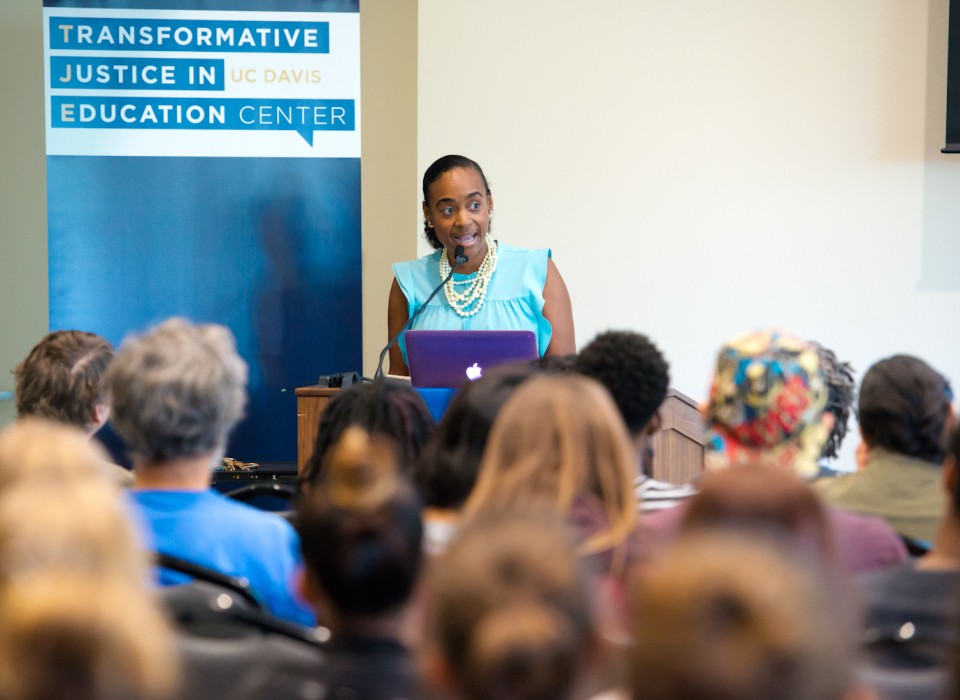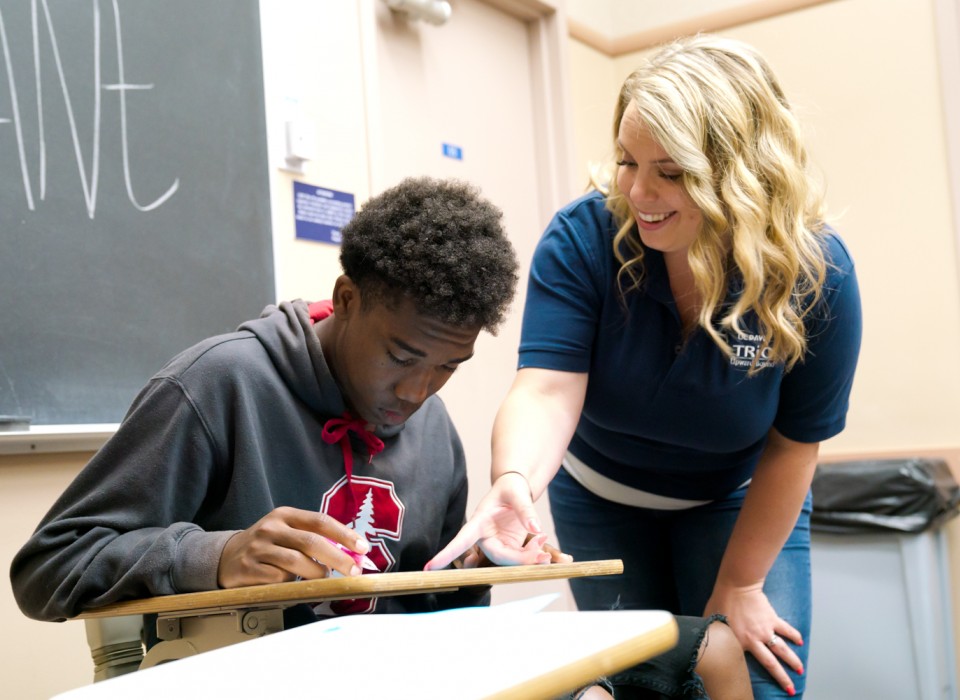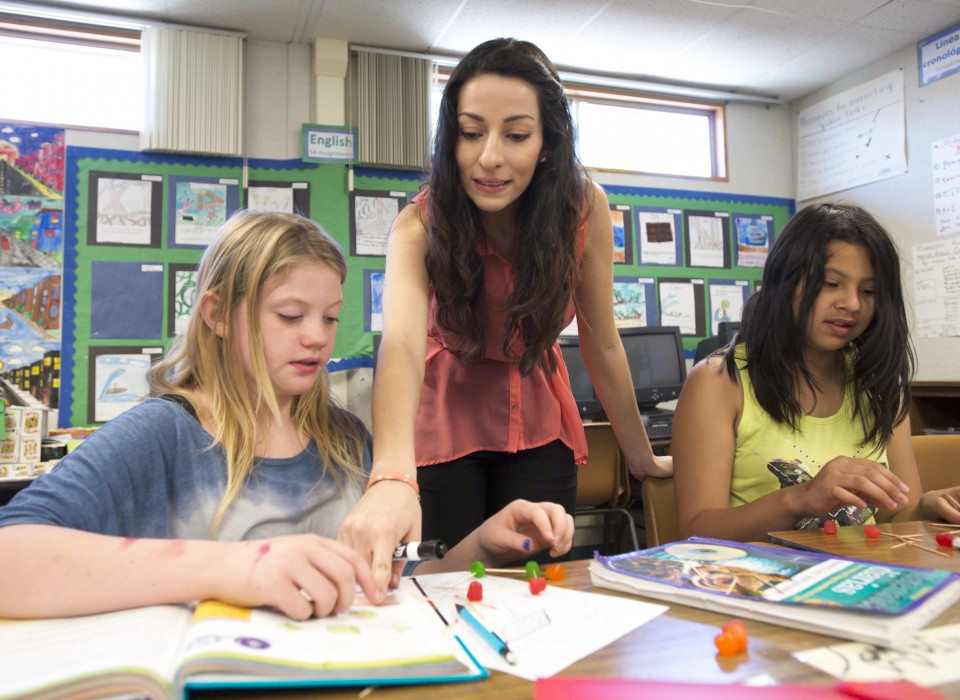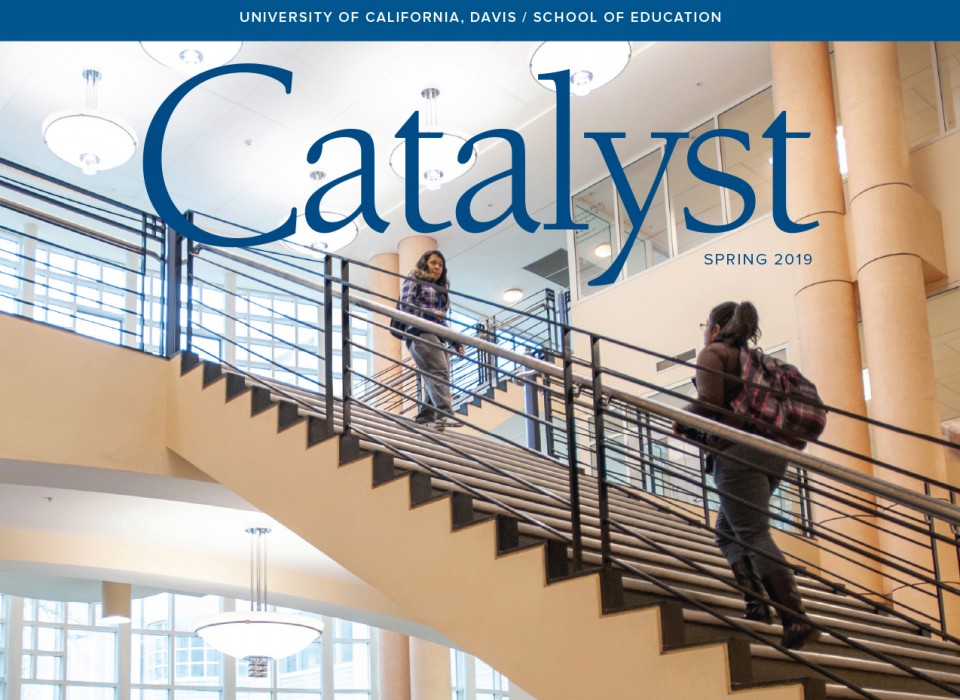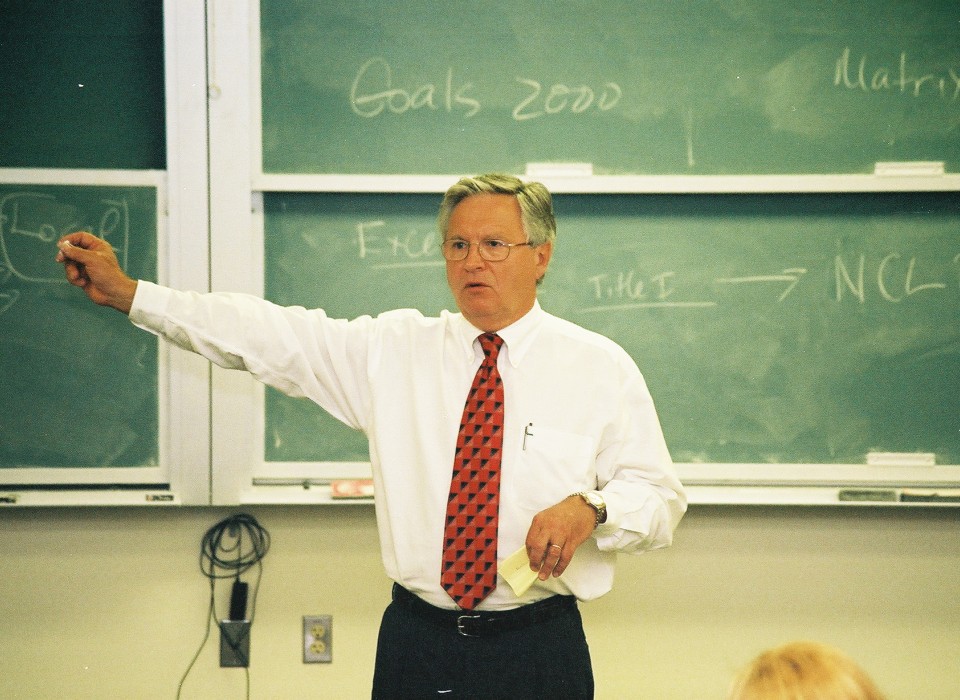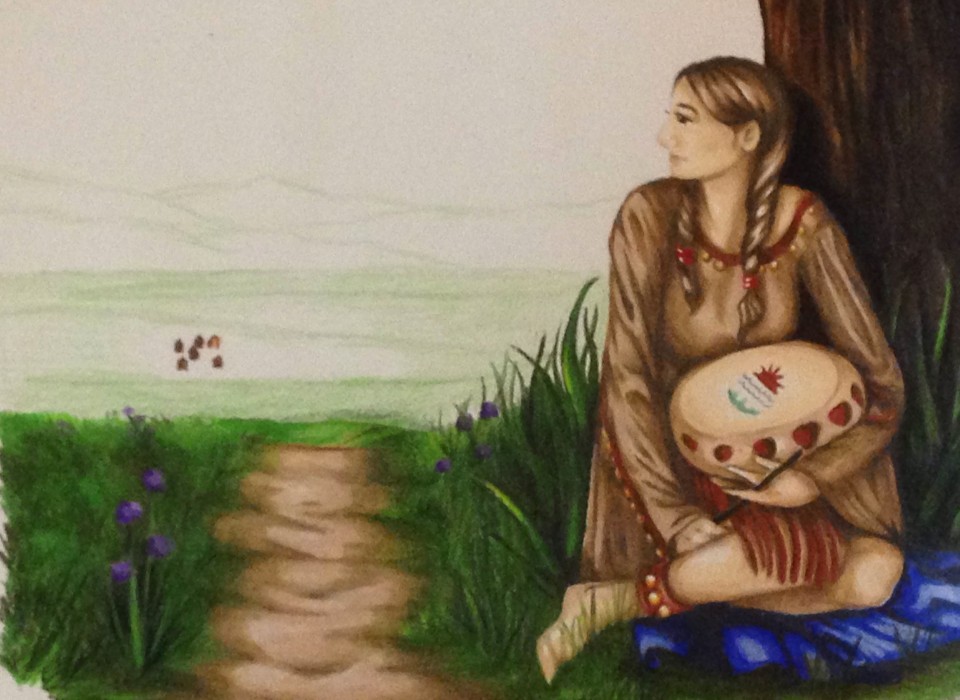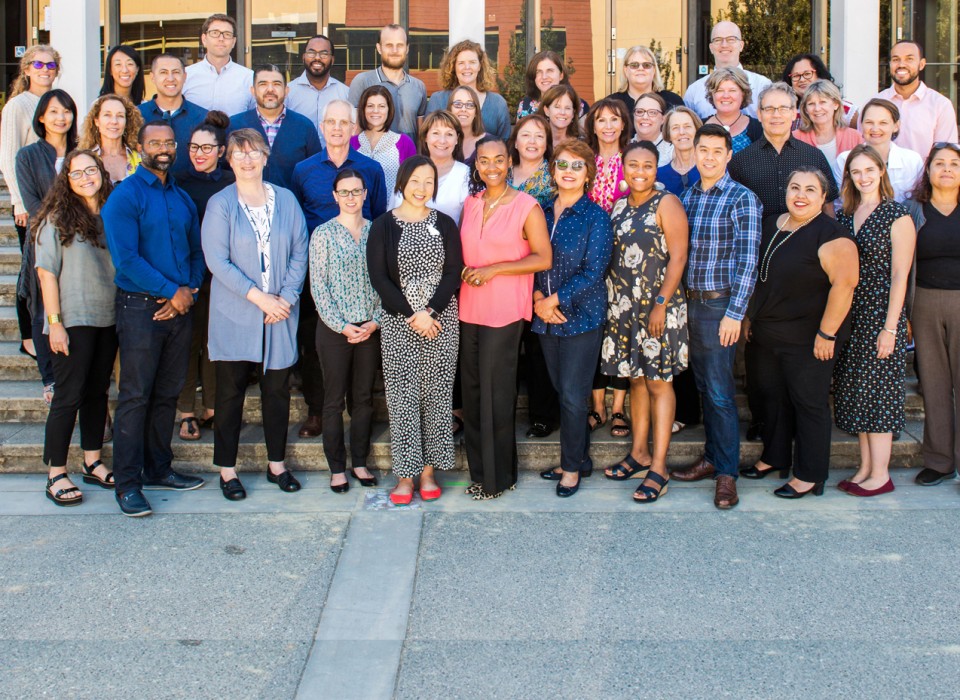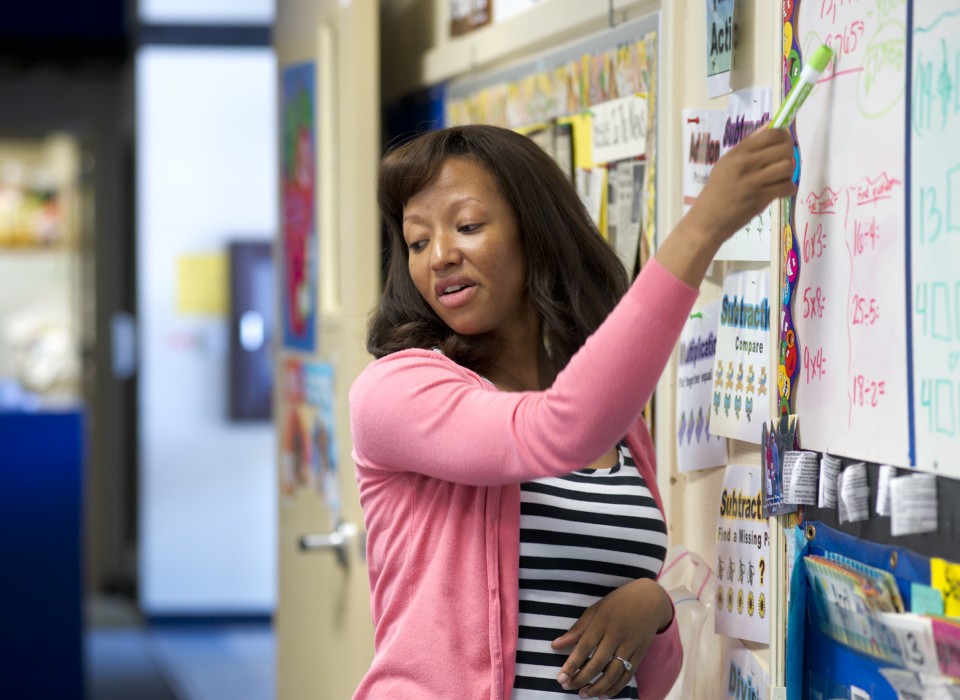Case: Bird Monitoring
4th Grade Class
Description
This yearlong bird monitoring project engages a class of fourth
graders in the collection, analysis and submission of local bird
species data. In so doing, the project connects them to their
local government and to a global dataset and community of
contributors. Working at two sites – one on the school campus and
another in the surrounding neighborhood - students learn
about the abundance and distribution of birds in relation to
features of their habitat, such as shelter and food
available 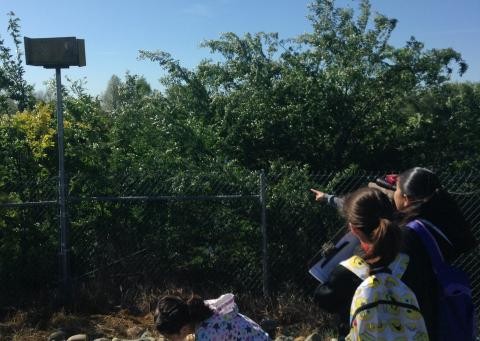 Students report data
to eBird, an online
bird monitoring program, and use findings to (1) propose habitat
improvements for a public pond and (2) implement bird-habitat
improvements on their school campus. Students also investigate
bird species patterns across seasons and make comparisons between
the two research sites to learn about different habitats and the
species they attract.
Students report data
to eBird, an online
bird monitoring program, and use findings to (1) propose habitat
improvements for a public pond and (2) implement bird-habitat
improvements on their school campus. Students also investigate
bird species patterns across seasons and make comparisons between
the two research sites to learn about different habitats and the
species they attract.
Institution: Elementary School Classroom
This case uses eBird as part of a larger science project, which was developed by a teacher to use in her fourth grade class. She uses citizen science to teach both the Next Generation Science Standards and the Common Core. She solicits the support of the school, families, and the greater community by encouraging them to participate in the data collection process.
Participants: Fourth grade class
25 students are in the participating classroom. The public elementary school is located in an agricultural town and students’ backgrounds vary, with a significant proportion coming from backgrounds traditionally underrepresented in science.
Species or system studied: Birds
The students assess the abundance and distribution of birds – both local and migratory – at two local, man-made sites.
Research site: Wetlands & School Arboretum
Situated in the Sacramento Valley, students collect, submit, and analyze data at two sites – their school arboretum and at a local, man-made pond. The arboretum provides students with opportunities to master observation and data collection techniques. The pond, located about 3 miles from the school, allows students to work with, and within, the broader community.
Participation Structure: Classroom-based
Students conduct weekly observations at the arboretum as a part of school day activities. Once a month they compile their data for submission to Cornell Lab of Ornithology’s eBird. In the Fall and Spring, students take a field trip to the public pond and submit data for this second site. Discussion and related activities happen across the year and are integrated across the classroom curricula.
Duration: School year
Students participate throughout the 9-month academic year. The project continues year-on-year, but students graduate out. This is the second year of the project at this site. The specific eBird citizen science project is ongoing and was launched in 2002.
Curricula and Supporting Materials
The bird monitoring citizen science project is integrated into the NGGS fourth grade science curricula and Common Core State Standards. For example, when learning how to identify birds by sound, students learn about waves and how to read bird song spectrographs. Students also learn how to conduct research and synthesize data from multiple sources. Visit the YCCS to learn more about this project’s activities and how to implement them at your site. Links the resources below coming soon:
- Intro Blog
- Using sentence frames
- Asking Questions Part I and Part II
- Co-creating Research Methodology
Contact: http://ebird.org/content/ebird/
Key Practices In Action
Through in-depth case studies of diverse YCCS projects, we have documented youth-centered key practices that are effective in promoting learning and environmental science agency. Click the headers below to learn more about what those key practices look like in this particular case.
Sharing Findings with Outside Audiences
At the end of the school year, students summarize their project and present findings to the town’s Parks and Recreation City Council. Additionally, students share what improvements they think are needed at the pond, such as to increase bird habitat or make the pond a more inviting space for the public.
Speaking to the city council is a responsibility that the teacher lets students carry. With support, the teacher gives the students full responsibility for deciding what to include in their presentation, how to explain their scientific findings, and who will talk during the presentation. In small groups and pairs, students choose sections of the presentation and flesh out exactly what they want to say. The whole class then practices the presentation as a team and develops a Powerpoint presentation using photos they took in the field.
At the end of the presentation, city council members ask the students questions about their scientific findings and suggestions. Last year, the first year of the project, the city council thanked the students for their work. The teacher hopes in subsequent years there will be more follow up regarding the improvements students suggest.
Ensuring High Data Quality
When teachers ask students to use evidence to support their findings, and to sort their data into “ready to submit” versus “needs more research/evidence,” they learn that not all data are created equal.
In this project, it is common to hear students asking, “what is your evidence?” after someone shares their findings. For instance, Carlos explained that although they found evidence of an owl from pellets beneath an owl box, this was not data they could submit, since the evidence doesn’t help identify which kind of owl was present. Students become bird experts through feather and bird call identification as well as studying bird physiology and habitat. They practice making weekly observations for about three months before submitting any data.
As students compile data as a class, the teacher asks students to sort their findings and determine if more evidence or research is needed. Only the data that is backed with evidence is submitted to eBird. Afterwards, they wait to get confirmation from the Cornell Lab of Ornithology, which organizes the eBird project. For example, last year one of their data entries was rejected as the class estimated the size of a flock of the Brewer’s Blackbird, which for scientists at the Lab of Ornithology, was not accurate enough.
Interacting with Complex Social Ecological Systems
While learning about bird identification, students become immersed in learning about birds, their habits, physiology, habitat, and diversity. They are able to connect bird adaptations to habitat and habitat diversity to bird species diversity. They also notice how human activity influences birds. For example, each summer when the surrounding tomato fields are harvested, students notice an increase in raptors. Students understand that the harvesting of tomatoes displaces rodents, which attracts birds of prey.
By prompting the students to recollect and reflect on what they see happening around the school and pond, the teacher situates the students’ research within the larger ecological content. She has seen that this adds breadth and depth to understanding of natural phenomena.
YCCS Products
Data: Submission of monthly data from the arboretum, plus Fall and Spring data from the pond to Cornell Lab of Ornithology’s eBird.
- Why: According to their website each month 1,000,000 bird observations are reported to eBird (“Cornell Lab of Ornithology, Mission: Citizen Science”, October 2016).
- Audience: Ornithologists at Cornell lab of Ornithology
- Impact: Contributes to a large body of data that allow scientists to understand how habitat destruction, climate change, pollution, and disease influence bird populations.
- Audience: Parks and Recreation City Council. In end of year presentations, students present their project, findings and proposed pond improvements to the town’s Parks and Recreation City Council
- Impact: The presentation gives students ownership of their data and broader findings. The presentation also informs the Parks and Recreation City Council of their work and how the neighborhood pond could be improved. Impact on Council policy is to be determined. Actions taken to improve the pond habitat as a result of student research and recommendations may take years.
Habitat creation: Plantings and signage in the school arboretum.
- Why: rehabilitate bird habitat and develop the arboretum as an educational space for the school.
- Audience: Students and staff at elementary school
- Impact: Students make the arboretum a more inviting place for birds and humans alike.
- Impact: demonstrate to students how scientific findings inform engineering/design endeavors
Community outreach and education: Development of signage at public pond for pond visitors to learn about the class’ citizen science project and instructions for contributing their own observations.
- Why: Signage at the pond can increase the public’s awareness and stewardship of the community’s natural resource.
- Why: Students learn how to communicate their project to the public and grow the project by soliciting the help of others.
- Audience: Visitors to the pond.
- Impact: Citizen science projects work best when many people participate. Drawing the community into the project validates the student’s work.
- Impact: Input of public data creates a learning opportunity, as students have the chance to decipher the quality of the public’s data in comparison to their own.
Field journals: Student journals with individual observations and reflections.
- Why: Students use their field guides to develop their presentation to the city council and to compile data for submission to eBird.. Keeping a field journal also lets students see the quantity and quality of their work over time.
- Audience: visiting educators and researchers
- Audience: students – themselves and their peers.
- Impact: Field journals allows students to organize their work, and gauge progress over the yearlong project. It also helps students share the project with others, as demonstrated by students referring to their field notebooks while talking with visiting educators and researchers. For example, many students noticed that their observations became more detailed 5 weeks into the project because they now know more about birds and what to look for.
Outcomes & Evaluations
The students get graded on their participation in the project, as part of overall classroom activity. Additionally, the teacher uses quizzes, formative assessments, and classroom observation to assess students’ science learning.
More on outcomes and evaluation coming soon.

